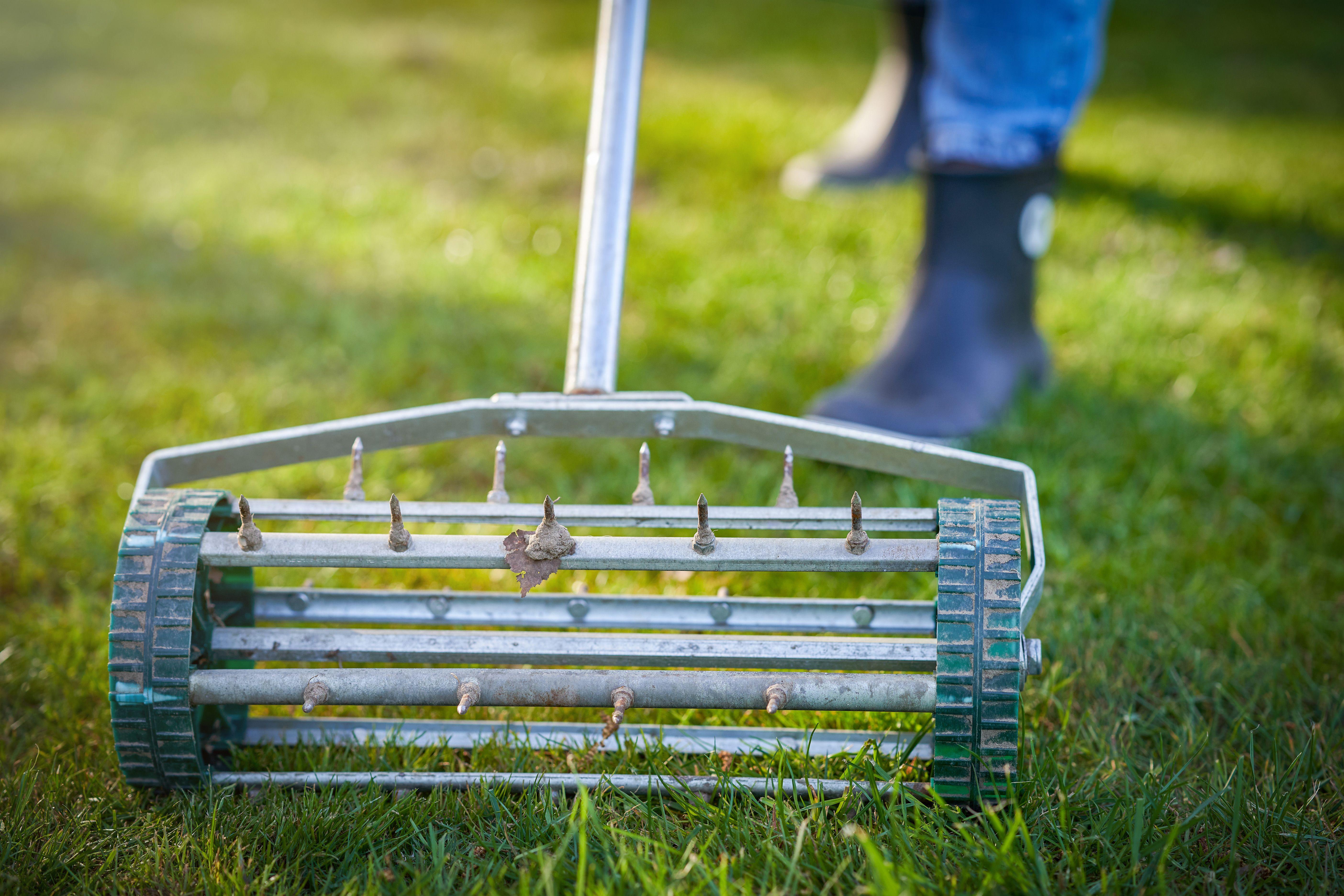Key Takeaways
- Aerate lawn with a thatch layer thicker than 1 inch to let water and nutrients pass through.
- Lawns compacted from heavy foot traffic benefit from aeration every couple of years.
- Poorly draining lawns with pooling or puddles are also candidates for aeration.
Experts agree that lawn aeration is one of the best ways to refresh tired or struggling turfgrass. Not only does it relieve compaction from seasons of foot traffic—both humans and pets—but it also allows essential nutrients, moisture, and oxygen to reach the root zone more easily.
However, not all lawns benefit from aeration. Some turf challenges require other interventions. Your lawn provides several cues about when to aerate. Here’s what to look for, along with tips for getting the most out of your aeration efforts.
What Is Lawn Aeration?
Aeration is the process of creating air spaces in a lawn, usually via 3-inch holes poked into the soil at regular intervals. These small holes are entry points for moisture and nutrients that will spur microbial activity and supercharge the lawn’s root zone for strong growth. The lawn’s root zone is the foundation of healthy growth. By improving the quality of the root zone, you can improve the quality of your lawn.
Aeration is the prescribed treatment for two main lawn problems: excessive thatch and compaction. Both thatch and compaction limit moisture, nutrients, and oxygen from making their way into the root zone, causing the turf to grow poorly. Aeration is often the first step to setting the lawn on a path toward vigorous growth.
Reduce Thatch
Aeration breaks through a frustrating layer of thatch. Thatch is made up of decomposing grass stems and roots on the soil surface. Grass blades rise above this layer of dead plant material. A thatch-filled lawn might feel spongy underfoot. The tightly intermingled thatch layer knits together in a way that allows only a trickle of water and nutrients to filter into the root zone.
Which lawns to aerate: Turf scientists have found that a lawn with a thatch layer greater than 1 inch benefits greatly from aeration. Warm-season turfgrass, such as Bermudagrass and St. Augustinegrass, is more prone to developing a thatch layer than cool-season grass, such as Kentucky bluegrass.
How to check: Use a sharp spade to lift a small section of turf and measure the thatch layer.
Relieve Compaction
Excessive traffic on a lawn causes the soil particles in the turf’s root zone to press more closely together, hindering access to water, nutrients, and oxygen. The result is soil compaction and stunted lawn growth. Aeration makes big openings in the soil that allow valuable elements to filter in, re-igniting the soil’s microbial life that will further assist with creating healthy soil conditions.
Which lawns to aerate: A frequently used lawn, like the patch of turf that your dog devotedly paces or the backyard soccer field, is probably suffering from some compaction.
How to check: When your lawn is moist, push a screwdriver into the soil where you think compaction might be a problem. If the screwdriver can’t be easily inserted, your lawn likely would benefit from aeration.
Improve Drainage
Because aerating opens up channels for water to sink into the soil, it can help alleviate poor drainage across your lawn.
Which lawns to aerate: If a lawn drains slowly after a rain, the cause might be a blocked drainage swale or recent landscape changes that modified water flow patterns. If you can rule out these causes, aeration could be helpful.
How to check: Look for areas of pooling or excessive sogginess after rain or irrigating. If this can't be explained by obvious physical blockages, try aerating.
Related
How Often to Aerate Lawn
Lawns can be aerated as often as once a year but that is rarely necessary. Only high-use lawns such as pet runs and sports fields that receive near-daily use require annual aeration. Most lawns benefit from aeration every two or three years.
Tips for Aerating Lawn the Right Way
- Time it right. Aerate cool-season lawns in fall when temperatures drop and there are fewer weed seeds. Aerate warm-season lawns in June or July.
- Use a core aerator. Use a core aerator instead of a spike aerator. A core aerator removes cores of soil from the turf, depositing them on the soil surface. A spike aerator makes holes in the soil surface but further compacts the soil in the process.
- Aerate when the soil is moist. Aerate a couple of days after a soaking rain. When the soil is moist, but not wet, the tines of the aerator will more easily sink into the soil, and the soil cores will release from the aerator well.
- Mind your irrigation lines. If you have an irrigation system, clearly mark your lines before aerating. Some irrigation lines are close to the soil surface and can be damaged by an aerator.
- Make many passes. You cannot make too many holes in your lawn when aerating. Your goal is to cover the lawn with holes at about 2-inch centers. Criss-cross the lawn many times to adequately aerate. A single pass with an aerator will do little to improve the turf.
- Water after aerating. Moisture helps break up soil cores and promotes turf recovery after aeration. Aim to provide your lawn with about 1 inch of water a week for several weeks after aerating.



